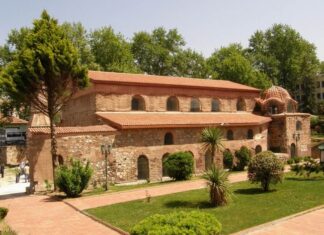Early Trade and Industry in Bulgaria
Railroads and Urban Specialization
The first railroad in Bulgaria was built in the second half of the 19th century, connecting Russe on the Danube with...
Bulgarias Economy under Turkish Rule
Agrarian Economy and Land Systems
During the five centuries of Turkish rule in Bulgaria (1396–1878), the country maintained a mostly agrarian economy. Farming was the...
Exploitation and the Big Leap Forward
In the late 1950s, the Bulgarian people faced increasing exploitation under the Communist regime. In October 1958, the Bulgarian Communist Party, acting under clear...
Jesus’ Message to the Ephesians: Hating Evil Practices
In Revelation 2:6, Jesus says something a bit strange: "But you have this in your favor: You hate the practices of the Nicolaitans, which...
The Loss of First Love in Church History
When we look at the letter to the Ephesians from the perspective of church history, we see that the loss of first love became...
The Tree of Life Symbol of Jesus
The tree of life was first mentioned in the Garden of Eden. Adam and Eve were allowed to eat from it, but after they...
Phrygian Art and Culture in Anatolia
Influences and Connections
Phrygian art, shaped by influences from Hittite and Urartian cultures, played a role in inspiring Etruscan art in Italy. Simultaneously, the Phrygians...
Early Christian Influences and Phrygians in Anatolia
Early Christian Influences
The early spread of Christianity in this region owes much to St. Paul. However, the 2nd century AD witnessed the emergence of...
Fly Pegasus
But that`s not the main goal. The goal is to make the operation efficient. When flying with Pegasus, it`s you who do the cleaning...













